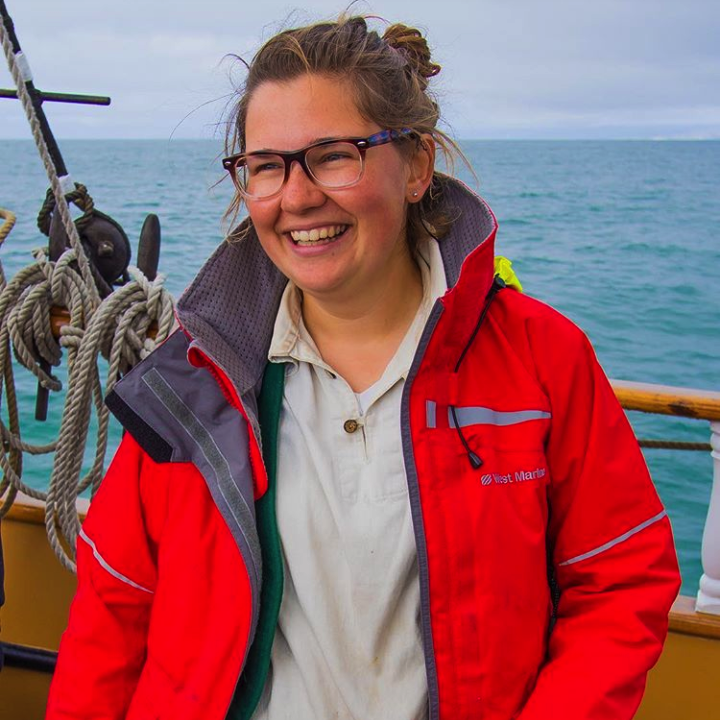The Physics Alive Podcast

Episode #9
Science Communication, Glaciers,
and a Podcast with Kate Hruby
Kate Hruby is a self-proclaimed physics doubter turned physics enthusiast. She earned a Masters at the University of Maine studying glacier dynamics and digging deep into applied physics. She sails boats, plays with flubber, has great insights about education and science communication, and hosts a fun and informative podcast called Go Forth and Science.
Today's Guest:
Kate Hruby
Kate Hruby graduated from the University of New England in 2016 with a B.S. in environmental science and from the University of Maine in 2019 with a Masters in Earth and Climate Science. She is currently Chief Mate for the company Deep Green Wilderness, where she is part of a team of experienced scientists and sailors providing students with live-aboard marine science, sailing and environmental education experiences on the Salish Sea off the coast of Washington state. This year she also started a podcast called Go Forth and Science, where she and her guests tell tales of science and adventure in the world around us. In this episode we talk about the learning experiences that made her education great, the super cool physics of flowing glaciers, why we and our students should learn a bit about glaciers, and we get the inside scoop on her podcast.
Episode Notes and Resources
Let’s talk about teaching
The tone of science writing
- Brad: If you are enjoying doing your science writing, you probably aren’t doing it the right way, and you’re going to sound very boring and that’s what we want you to sound like.
- Kate: Exactly, and I always got angry that that was the way we were supposed to sound. So I really got passionate about science communication. Science is fun and interesting, and we should be talking about it in a fun and interesting way.
What has Kate found to be the most effective ways to learn?
- Hands on activities
- Have students teach the class
Kate: Having the students teach the class is more important and more pertinent and useful than having a teacher teach the class. A lot of times, our students know incredible amounts of information about things that are related to whatever topics we are [teaching].
She also raved about her love of field trips, though this segment did not make the final cut.
Let’s talk about glaciers
What is a topic that could be introduced into a physics class?
- Friction! A mountain glacier is a whole bunch of ice piled into a part the mountain and there gets to be so much ice that it starts flowing down the mountain. Friction plays a huge role in this system. Say that ice is up against the rock of the mountain. The ice is flowing but the rock is not. There is a crazy amount of friction in between those two layers.
Flubber: makes a great glacier. “Flubber glaciers are my jam.” Flubber = elmer’s glue, warm water, and borax.
- Check out a recipe.
- Or watch a demonstration.
Why should students study glaciers?
They directly tie into climate change. We’re trying to figure out what our future is going to look like. Glaciers are a really important part of this system.
Where can we go to learn more about glacier physics?
- UMaine Geodynamics
- British Antarctic Survey
- Google flubber glaciers
- For example: A model presented on Science Friday
- or a model on the National Park Service website
- Glacier PhET
- And of course the first few episodes of the Go Forth and Science podcast
Let’s talk about the podcast Go Forth and Science
Find the podcast at:
- Website: www.goforthandscience.com
- Instagram: goforthandscience
- Twitter: goforth_science
- Facebook: goforth.science
